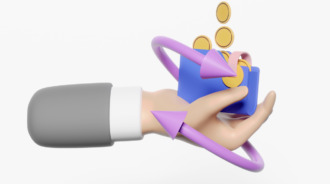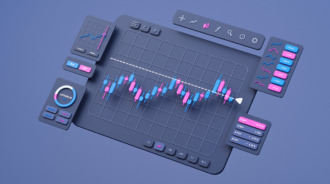

You know that accounting is crucial for any business. But do you know how cost accounting impacts your company’s bottom line? Cost accounting provides critical insights into how much it costs to run your business. It helps determine how much you should charge for your products and services to make a profit. Without accurate cost accounting, you’re flying blind and could lose money without even realizing it.
In this article, we’ll explore cost accounting, the different types of cost accounting methods, and how businesses of all sizes can benefit from implementing an effective cost accounting system. You’ll learn why cost accounting matters for decision-making and how it helps ensure your business’s success. After reading this, you’ll understand cost accounting and why it’s important to manage costs, set prices, and maximize profits.
What Is Cost Accounting?
Simply put, it’s a way for businesses to track the costs associated with operating the company.
Costs of Doing Business
Some of the main costs it helps track include:
- Raw materials and supplies: The materials used to produce goods or services.
- Labor: The cost of employees and worker hours.
- Overhead: Rent, utilities, equipment, and other operating costs.
By tracking these costs, businesses gain valuable insights into:
- How much it costs to make a product or deliver a service;
- Which products or services are the most profitable;
- Areas where costs can be reduced to improve profit margins.
Cost accounting provides the numbers behind key business decisions. Without it, companies are left guessing whether they’re actually making or losing money.
Forms of Cost Accounting
Cost accounting comes in a few forms:
- Job costing: Tracking costs for specific projects or batches of goods.
- Process costing: Allocating costs to units of production in a continuous process.
- Activity-based costing: Assigning overhead costs to products and services based on the activities and resources used.
In today’s competitive environment, accurate cost accounting is vital. It’s how smart companies determine a competitive and profitable pricing strategy. The bottom line? If you’re not using cost accounting, you could leave money on the table.
Difference Between Cost Accounting and Financial Accounting
Cost accounting and financial accounting are two different beasts. Financial accounting reports financial results and positions to external stakeholders like investors, regulators, and analysts. Cost accounting, on the other hand, aims to help businesses make better decisions internally.
Cost accounting is not required to adhere to set standards, unlike financial accounting, and can be flexible to meet the particular needs of management.
The Difference Comes Down to Scope and Purpose
Cost accounting looks at the costs of producing goods and services to determine how much profit you’re actually making. It provides detailed information about where money is being spent in your operations so you can find ways to cut costs and improve efficiency.
Financial accounting, however, is concerned with reporting a company’s overall financial performance and position to external parties. It includes income statements, balance sheets, and cash flow statements that summarize a company’s finances according to generally accepted accounting principles (GAAP).
While financial accounting looks at the big picture, cost accounting zooms in on the nitty-gritty details. It analyzes how much it costs to purchase raw materials, pay for labor, cover overhead, and account for waste or spoilage. These granular insights help businesses determine product pricing, find ways to optimize resources and gain a competitive advantage.
So, cost accounting and financial accounting provide different views on a company’s financial health. Used together, they give you the full picture you need to make strategic business decisions and keep your company on track for long-term success.
Difference Between Cost Accounting and Management Accounting
Cost accounting and management accounting are related but have some key differences.
Scope
Cost accounting focuses on the costs of producing goods and services. It tracks direct costs, such as materials and labor, and indirect costs, like overhead. Management accounting has a broader scope. It analyzes financial and non-financial information to help managers make decisions and improve business performance. This includes areas like budgeting, forecasting, and performance evaluation.
While cost accounting aims to determine the costs of products and services to set prices or determine areas to cut costs, management accounting aims to provide managers with information to help optimize business operations. Cost accounting is primarily for external financial reporting, whereas management accounting is for internal use.
The main differences to remember are:
- Cost accounting centers on the costs of producing goods and services. Management accounting has a wider scope, including areas like budgeting and forecasting.
- Cost accounting is mainly for external reporting. Management accounting is for internal use to aid business decision-making.
- Cost accounting focuses on direct and indirect costs. Management accounting analyzes both financial and non-financial information.
- Cost accounting aims to determine costs to set prices or cut costs. The purpose of management accounting is to optimize overall business performance.
Knowing the distinction between these two accounting areas can help businesses apply the right tools and techniques to the appropriate needs. While related, cost accounting and management accounting serve different purposes, and managers should understand how they differ.

Key Objectives and Importance of Cost Accounting
Cost accounting provides key insights into how your business is performing. It helps identify areas that could be improved to increase profits and efficiency. There are a few main benefits and objectives of cost accounting:
Controlling Costs
Cost accounting gives you the tools to monitor expenses and look for ways to reduce them. You can determine which areas are over budget or inefficient by tracking the costs of materials, labor, and overhead. This helps ensure you’re not spending more than necessary to produce and sell your goods or services.
Improving Productivity
Analyzing costs can uncover productivity issues in your operations. If costs seem too high for the output or revenue generated, it may indicate a need to streamline processes or reallocate resources. Cost accounting helps determine how to maximize productivity to improve your bottom line.
Informed Decision Making
You can make strategic decisions about pricing, product mix, and resource allocation with a clear picture of your costs and margins. Cost accounting provides the financial clarity needed to choose options that benefit your company the most.
Budgeting
Comparing your actual costs to expected costs helps with budgeting and forecasting. You can see where estimates were inaccurate and make better predictions for the future. Accurate budgets and forecasts help ensure stability and proper funding for your business.
So, cost accounting gives businesses the means to gain control of their finances through managing expenses, improving productivity, enabling informed decisions, and effective budgeting. By understanding where your money is coming from and where it’s going, you’ll be in a much better position to boost your bottom line and plan for success.
Types of Cost Accounting: Cost Concepts, Costing Systems, and Cost Estimations
Cost accounting helps businesses understand the costs of running their operations. A few main types of cost accounting methods are used to categorize costs. Knowing their differences will help determine which is right for your business.
Cost Concepts In Accounting
Two important cost concepts in accounting are fixed costs and variable costs. Fixed costs remain the same no matter the activity level, like rent. Variable costs change based on activity, such as the cost of goods sold. Mixed costs have both fixed and variable components, for example, utilities. Understanding these concepts helps in budgeting and decision-making.
Costing Systems
Job order costing is used when goods are custom-made, like in construction. Each job has unique costs that are tracked separately. Process costing suits high-volume production, averaging costs over batches. Operation costing tracks the costs of specific operations. These systems provide insights into the profitability of products, jobs, and processes.
Cost Estimation
Cost estimation forecasts the costs of future activities. It guides budgeting, product design, and investment decisions. Three common techniques are analogous estimating (comparing to similar activities), parametric modeling (using mathematical models), and bottom-up estimating (summing individual costs). Cost estimation considers expenses, risks, and uncertainties to provide useful projections.
Cost accounting is key to managing business resources and guiding strategic decisions. The methods and concepts provide actionable insights into spending, allocate costs accurately, and facilitate planning and budgeting. Selecting the right techniques and approaches for your needs helps optimize financial performance.
Real-World Examples and Uses of Cost Accounting
Cost accounting is essential for businesses to understand costs and make good decisions. Let’s look at a few real-world examples of how cost accounting is used:
Pricing Products
Businesses must know their costs to set appropriate prices for their goods and services. If prices are too low, they won’t make a profit. If prices are too high, customers may go elsewhere. Cost accounting helps determine the total cost to produce each product so companies can add a markup and set competitive prices.
Budgeting
Creating an operating budget involves estimating future costs and revenues. Cost accounting provides historical data on costs that can be used to forecast future costs. It also helps calculate how costs may change with increases in production volume or changes to the product mix. With an accurate budget, businesses can make sure they don’t overspend.
Reducing Costs
Determining where costs can be reduced is key to improving profit margins. Cost accounting breaks down costs into categories like materials, labor, and overhead. Managers can analyze each category to find ways to cut costs, e.g., by reducing waste, negotiating lower materials prices, or improving production efficiency.
Make or Buy Decisions
Businesses often must decide whether to make components and products in-house or buy them from outside suppliers. Cost accounting helps compare the total cost of manufacturing the item yourself versus the total cost of purchasing it from another company. The option with the lower total cost is typically the better choice.
So, cost accounting is integral to many companies’ planning, control, and decision-making. Providing detailed cost information helps optimize pricing, budgeting, cost reduction, and sourcing strategies. For any business focused on improving profitability, cost accounting is a must.
Limitations and Potential Drawbacks of Relying on Cost Accounting
Cost accounting certainly has limitations and potential downsides that are important to remember.
Narrow Focus
Cost accounting typically focuses on a specific process, product, or department. While this narrow focus provides valuable insights, it can also mean missing the bigger picture. The information may not translate well across the organization or reflect the business’s overall health. It’s easy to optimize one area while neglecting the broader impacts.
Inaccurate Information
The data and reports generated by cost accounting are only as good as the information that goes into them. If errors, omissions, or inaccurate assumptions are made, the outputs will be flawed. It can be difficult to spot these issues, leading managers to make poor decisions based on faulty information.
Manipulation Potential
There is an opportunity for unethical behavior by manipulating cost accounting methods and data to achieve certain results. This “creative accounting” can temporarily make a process seem more efficient or a product seem more profitable to meet targets or gain benefits. Eventually, the tricks are revealed, damaging credibility and trust.
Additional Costs
Implementing and maintaining a cost accounting system requires resources, time, and money. While the goal is to improve cost efficiency, the system itself also incurs costs. For smaller companies, these additional costs may outweigh the potential benefits. It’s important to evaluate if the investment in cost accounting will generate a good return.
Cost accounting is a useful tool for managing and controlling costs but should not be viewed as a perfect solution. Recognizing cost accounting limitations and drawbacks can help supplement it with other information to gain a balanced perspective. Using it responsibly and ethically is key to maximizing its benefits.
Conclusion
So now you understand why cost accounting is so crucial for businesses. It provides key insights into the costs of products and services that help companies make better decisions and increase profits. Cost accounting gives organizations a competitive advantage by monitoring costs, identifying waste, and optimizing spending. Though the concepts and methods can seem complex, cost accounting doesn’t have to be an intimidating topic. With the basics under your belt, you’ll be well on your way to helping your company boost the bottom line and achieve long-term success. Cost accounting really is that important, so take the time to understand how it works – your business will thank you for it.












